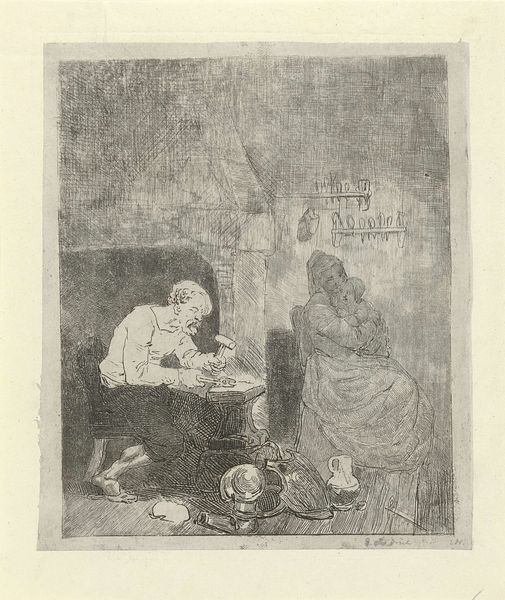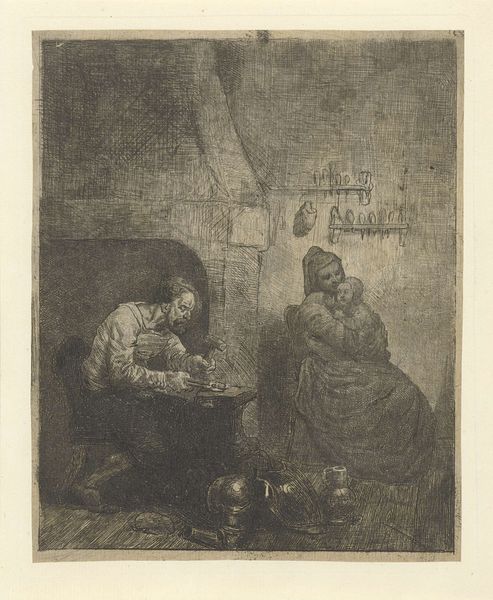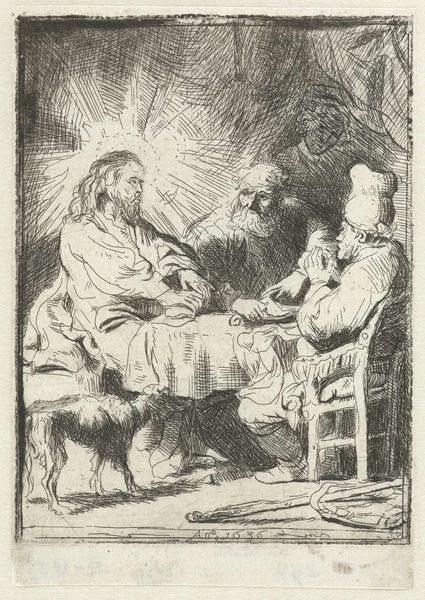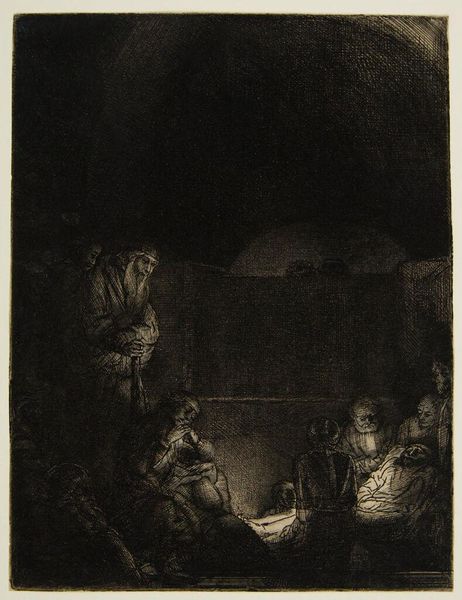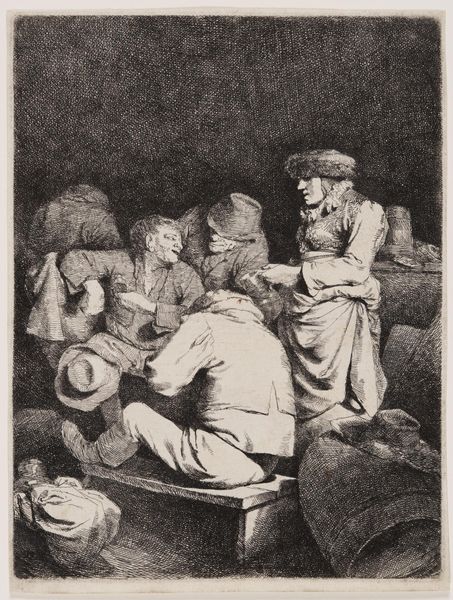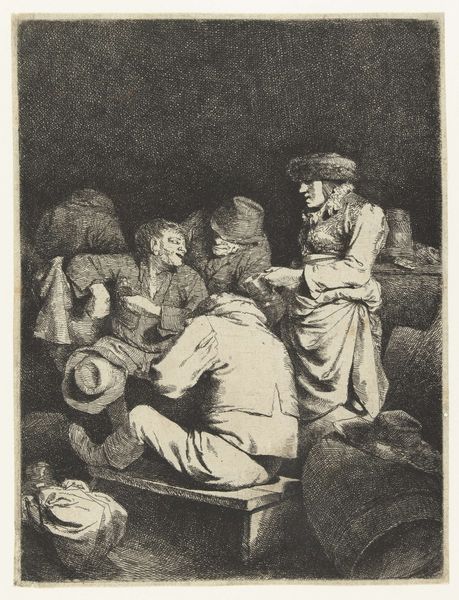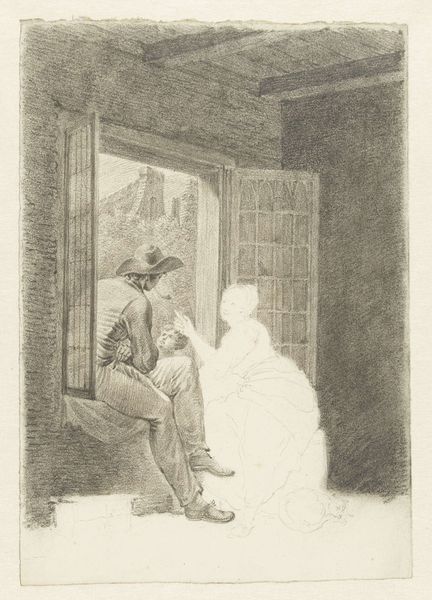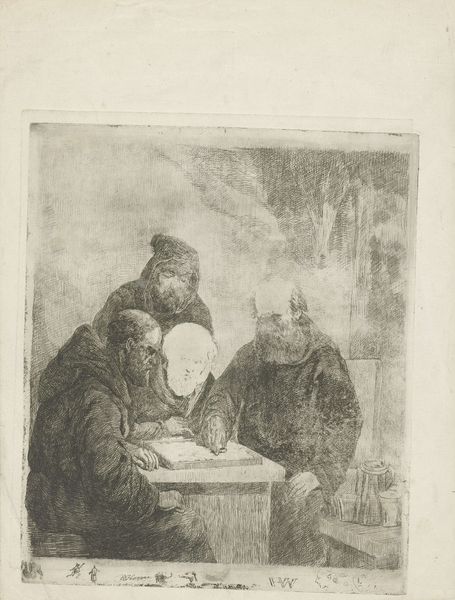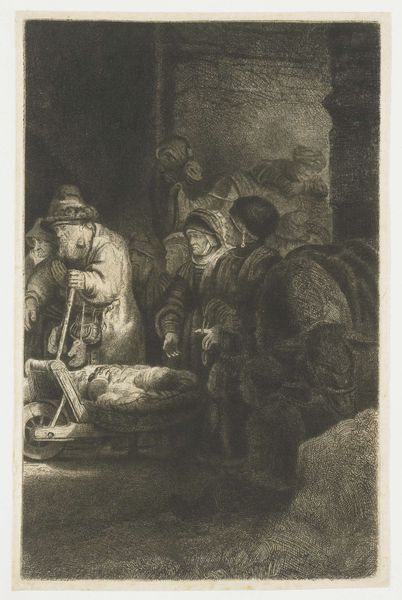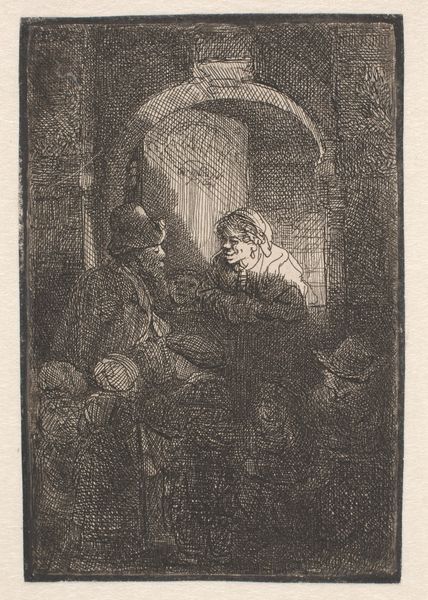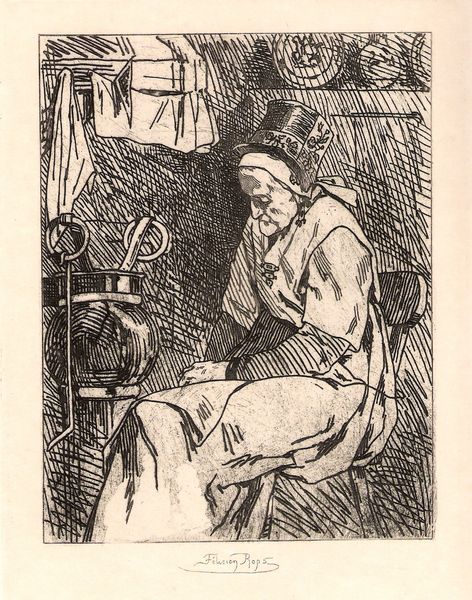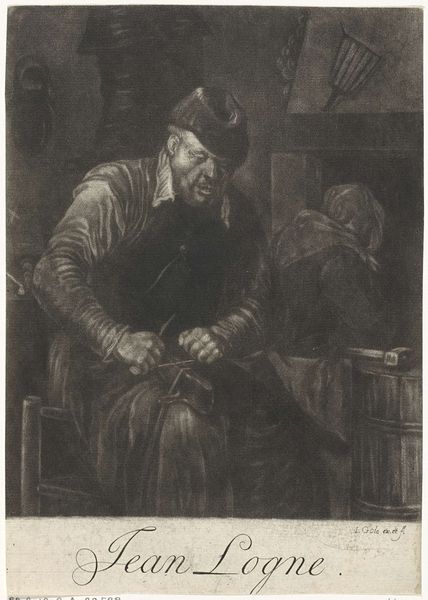
drawing, graphite
#
portrait
#
pencil drawn
#
drawing
#
pencil sketch
#
charcoal drawing
#
pencil drawing
#
graphite
#
genre-painting
#
graphite
#
realism
Dimensions: height 320 mm, width 240 mm
Copyright: Rijks Museum: Open Domain
Curator: Alfred Ronner's 1893 drawing, titled "Vergrooten," presents us with an intimate scene rendered in graphite. Editor: Immediately, I’m struck by the texture – that intense hatching gives such weight to the figures and their surroundings. It’s almost claustrophobic, but the light source draws you in. Curator: Indeed. Notice how Ronner uses dense lines to depict the craftsman’s worn apron and the rough wooden table. It tells us so much about his daily life and the realities of his labor. The contrast between these elements and the girl’s plain clothing emphasizes a social dynamic, too. What do you think the symbolism suggests about their connection? Editor: The figures have a definite weight – and her form certainly has connotations, being younger, and also carrying that small bag to the figure we recognize as an older, working man. I can also detect motifs around caregiving – note that the shoemaker sits, but seems tired nonetheless as he completes the physical craft that clearly occupies his place in society. And the humble surroundings, they underscore a common human interaction - this girl might be someone taking him alms, but he is also very possibly her relative. Curator: Considering the period, such an exchange could point to shifting economic structures impacting families and skilled trades. We observe this material culture reflected in the subject and in Ronner's deliberate rendering of the workspace. A stark view on artisanship in the face of nascent industrialism, no? Editor: I see something else too, which could reflect both this man's labour, and the humble generosity in return - notice the small, very realistic form of an animal or dog figure sitting right near the ground? It looks poised at their feet, in fact. And could be meant to signal faith. Curator: Interesting reading! It does serve as a grounded counterpart, situated as it is. But my gaze is pulled by the economic narrative, that seems to bind the room with visible traces of labor. It seems likely to be read from how Ronner highlights tools, materials, even shadows on the walls. Editor: Well, art always has a touch of both symbol and situation... Curator: True. Looking closer, there’s much to admire in his commitment to documenting tangible existence. Editor: And finding the quiet dramas within.
Comments
No comments
Be the first to comment and join the conversation on the ultimate creative platform.
